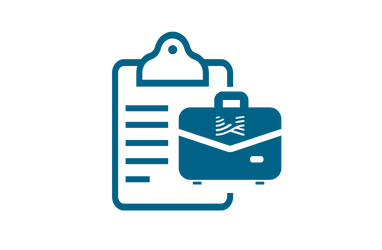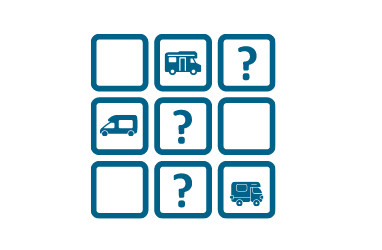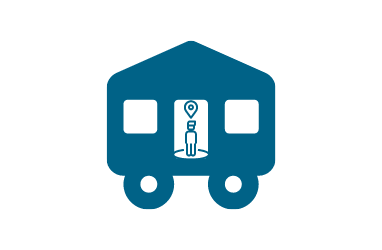Guide to Motorhome Camping in New Zealand
Travelling by campervan or motorhome is the only way to see the very best of New Zealand. In this guide to motorhome camping, we’ll take you on a journey from camping responsibly to freedom camping to camping apps.
Your personal hotel-on-wheels will let you explore wherever the road takes you — via famous locations and remote hideaways to a new wakeup view everyday.
Whether you intend to motorhome camp at regional parks, Department of Conservation sites, freedom camping spots or holiday parks, our guide will prepare you for what to expect.
Table of Contents
How to camp responsibly in New Zealand
There’s something special about going camping in New Zealand — whether in a tent, a motorhome, a caravan or under the stars. It allows you to disconnect from technology and modern life, and reconnect with nature and the outdoors.
We recognise the need to preserve our outdoor environments for future generations — and encouraging responsible, sustainable camping is at the forefront of that.
The Tiaki Promise
The Tiaki Promise is a commitment towards helping to preserve New Zealand’s environment for the future people of the land. The Promise acknowledges the country is precious and that everyone who lives and travels here has a responsibility to look after it.
TiakiTo care for people and place To help us keep the Tiaki Promise while travelling around Aotearoa New Zealand, aim to:
|
By following the Tiaki Promise, you’re making a pledge to act as a guardian, protecting and preserving New Zealand. This means looking after the country’s environment and leaving the landscape — and your campsite — as you found it.
See how you can travel more sustainably on your motorhome road trip.
Where you can stay in your motorhome
New Zealand provides plenty of options for where you can stay overnight in a motorhome or campervan, such as:
-
Holiday parks and other commercial campgrounds
-
Regional park camping areas
-
Freedom camping spots.
The type of camping you choose will determine what amenities (if any) you have available during your stay. It will also relate to the numbers of people you might find camping with you.
If you want to be able to stay at each of these types of campgrounds, aside from the commercial ones, you’ll need to have a certified self-contained (CSC) motorhome.
What is a certified self-contained motorhome?
When deciding on which motorhome hire or campervan rental to choose for your road trip, look for the CSC symbol on the operator’s website and the CSC sticker on their vehicles.

This label confirms that your recreational vehicle:
-
Meets the ablution and sanitary needs of those inside for at least three days
-
Is equipped with a fresh water storage tank for drinking and cooking
-
Has wastewater storage tanks — plus a rubbish bin with a lid.
The certification verifies that your hire motorhome is self sufficient — enabling you to legally camp wherever freedom camping is permitted throughout New Zealand.
Do you need to book campsites in New Zealand?
Many motorhome holidaymakers opt for a range of camping styles. You might decide to spend a night at a DOC campsite, then park up at a remote freedom camp the next evening. Your third night could involve a holiday park — where you can dump your waste and top up your water supplies.
Using this three night travel scenario as an example, you may need to book the DOC campsite. Some require making an online or visitor centre booking, whereas others are free.
Freedom camping is generally first come, first served with no booking needed.
You’ll definitely have to book to stay at a holiday park, a commercial campground or a regional park.
New Zealand camping tips
|
Check out our comprehensive blog on the best campervan spots to park up in New Zealand.
Freedom camping in New Zealand
The definition of freedom camping is when you camp overnight in a designated public space rather than at a managed campsite.
Freedom camping spots around New Zealand are plentiful. You’ll be able to find them:
-
Beside beaches — the Waimea Road Beach Carpark is one of many beachside freedom camping locations
-
On the edge of a lake — Iveagh Bay is a beautiful swimming location by Lake Brunner
-
Riverside — Waihi Falls Carpark offers river access and a stunning waterfall with it
-
Near native bush with spectacular mountain views — Chinamans Bluff in the heart of Fiordland at the trailhead of the Rees-Dart track
-
In cities and towns — Whareroa Reserve in Tauranga allows overnight camping in self-contained vehicles.
Don’t expect to find facilities at most of these freedom camping sites. Some may have a toilet and running water but are intended for CSC vehicles.
Can you camp anywhere in New Zealand?
Although the term freedom camping may suggest you can camp anywhere you want at any time, you can’t simply camp wherever you feel like it.
Freedom camping locations are determined by local councils in places that can sustain the numbers of people and vehicles that may come and go. They also take into account permanent residents who live nearby.
Local authorities can prohibit freedom camping in specific areas and enforce their bans. You can be issued with an instant fine if you:
-
Freedom camp where it’s not permitted
-
Damage or dispose of waste inappropriately in a prohibited area
-
Refuse to move on when asked to by an enforcement officer.
Where is freedom camping allowed in New Zealand?
More than 420 freedom camping sites exist around the country — as recognised by DOC and local councils.
You can only legally park up overnight at these permitted locations. To find out where these freedom camping spots are:
-
Download the CamperMate (App Store or Google Play) app and filter for them
-
Enquire at a local i-SITE visitor information centre
-
Call or call into a DOC visitor centre — for freedom camping locations on public conservation land.
Alternatively, you can search the DOC website to find a spot with campervan access. The most basic DOC campgrounds are free with fees increasing according to the services available.
If you don’t have access to the information above, be sure to check for No overnight camping signs before deciding to park up for the night.
Some free camping places might be next to busy roads or in council car parks. Be sure to research beforehand to find which spots will suit you best.
Is freedom camping safe in New Zealand?
For the most part, freedom camping is very safe as long as you stick to the designated areas that permit it. Like anywhere in the world though, it’s smart to take logical precautions such as:
-
Ensuring windows and doors are closed and locked at night — and when leaving your motorhome to walk a trail or go for a swim
-
Staying aware of your surroundings — and if your park up spot doesn’t feel safe, be prepared with a plan B of somewhere close nearby to drive to
-
Being aware of the bylaws of local councils for freedom camping.
Check out this NZ Police Visitor Guide which details local police station phone numbers along with tips on how to stay safe when travelling the country.
Find out everything you’ll need to know about freedom camping.
Using Department of Conservation campsites
Few countries have access to their wilderness via an extensive network of well-maintained huts and campsites.
New Zealand is lucky in this respect with over 250 vehicle accessible camping areas on conservation land, all managed by the Department of Conservation — known locally as DOC.
DOC is a government agency responsible for conserving New Zealand’s natural and historic heritage. With 13 national parks and more than five million hectares of land protected in parks and reserves, it’s a fairly big job.
You’ll be able to access most DOC campsites in a campervan or motorhome. Some simply aren’t suitable due to navigating narrow gravel or steep winding roads to get there.
If you plan to travel across the busier months, typically from October to April, it’s wise to book in advance for those sites which aren’t first come, first served.
Types of DOC campsites
DOC campsites can be cheaper than commercial campgrounds or holiday parks — ranging from free to around $23 per person per night. Those that cost nothing have limited facilities, if any, whereas those at the higher price point may even have flushing toilets.
Serviced campgrounds
Like the name suggests, serviced campgrounds have a wide range of facilities. You can expect to find:
-
Tap water — that may still need boiling
-
Showers and flush toilets
-
A kitchen or cooking bench
-
Rubbish collection
-
Access for all vehicle types and at least some powered sites.
You may also find barbecues, fireplaces, laundry facilities, cookers and picnic tables at serviced campgrounds.
Standard campsites
Expect a limited range of facilities at standard DOC campsites but you’ll definitely find:
-
Tap, stream or lake water — that should be boiled before drinking
-
Toilets
-
Vehicle access.
Although variable across standard campsites, you may also come across wood barbecues, fireplaces, cold showers, picnic tables, rubbish bins and cooking shelters.
Take a look at our guide to cooking in your motorhome kitchen.
Basic campsites
DOC’s basic campsites only offer limited facilities — but are free. To stay at one you’ll need to be driving a self-contained campervan or motorhome, though they do have:
-
Water tank, stream or lake water — that should be boiled before drinking
-
Basic toilets
-
Access by vehicle or boat.
Backcountry campsites
If you make it to a few backcountry campsites, expect the prices to vary although you can rely on having:
-
Water — likely from a stream so it should be boiled before drinking
-
Toilets.
You might also find cooking shelters, fireplaces and picnic tables at backcountry campsites.
See our top tips for cooking on the road in your campervan.
DOC also manages Great Walk campsites but you’d need to hike for a number of hours to get to one — making them unsuitable for motorhome camping.
If you’re planning a lengthy trip to make full use of DOC camping facilities in the North and South Islands, take a look into the Campsite Pass. You could save up to 50 percent in campsite fees. Passes come in both 30 night and 365 night options.
Popular North Island DOC campsites
To help with your research into what campsites are available and where they are across the North Island of New Zealand, download this handy Conservation Campsites North Island booklet.
Popular South Island DOC campsites
If you’re focusing on extensive exploration of the South Island, download this equally useful Conservation Campsites South Island guide.
Camping in regional parks
New Zealand regional parks are publicly-owned open spaces with facilities that are designed to serve the broader public. The country has more than 50 regional parks which are managed by regional councils.
Broken up by region, you’ll find:
-
31 parks in the Auckland region
-
Two parks in the Bay of Plenty
-
16 parks in the Wellington region
-
Four parks in the Canterbury region.
However, not all of New Zealand’s regional parks cater to campers — in fact, only a handful do.
Auckland regional parks
The regional parks in the country’s biggest city are located in bush, across farmland and next to beaches. You could overnight in a remote bush location, camp out on a working farm with animals, or park up in a picturesque spot.
It’s probably a good idea to book ahead for any regional park campsite stays — particularly in the summer months. Each campsite has fairly basic facilities and fees are relatively inexpensive.
Find out how to book accommodation in Auckland’s regional parks.
Wellington regional park
The Greater Wellington Regional Council also has a handful of campsites in regional parks throughout the area. Ranging from riverside spots to bush areas to wetland escapes, they all have simple facilities and are fairly cheap.
Check out the Wellington regional parks with camping facilities and follow the links to book.
Canterbury regional parks
Although there are a few regional parks in Canterbury, only one permits camping — Northern Pegasus Bay.
Camping isn’t allowed at either of the two Bay of Plenty regional parks.
Staying at holiday parks
Holiday parks are commercial campgrounds that offer powered and unpowered campsites. Their amenities can range from the very basic to everything you might need — all at a secure site.
Overnighting at a holiday park gives you the opportunity to:
-
Meet other travellers
-
Top up your motorhome batteries and fresh water
-
Refresh with a longer shower and more spacious ablution facilities.
What amenities are at New Zealand holiday parks?
When you decide to go motorhome camping at a Kiwi holiday park, you can expect to pay for a host of quality facilities. For instance, a typical commercial New Zealand camp would have:
-
A communal kitchen and a TV lounge
-
Freshwater filling and wastewater dump station area
-
Barbecue spaces and WiFi availability
- Ablutions blocks and laundry facilities.
Some holiday parks may also have a shop, pool, playground, bike or boat hire, and even a jumping pillow — an air-filled pillow permanently installed into the ground.
Typical New Zealand holiday parks
You’ll find many commercial campsites for motorhomes set in attractive park-like surroundings with plenty of trees and grass. New Zealanders enjoy camping by water so a beach, lake or river is often nearby.
Your camping site will include a plug-in point so you can connect your campervan to mains power. Amenities are usually fairly close by — and there may even be picnic tables on or near your site.
Do you need to book holiday park campsites in advance in New Zealand?
Like many countries around the globe, New Zealand’s busiest period is over the summer holidays. Summer is from December to February — but the school holidays are particularly busy.
Aim to book well in advance (some campgrounds can be booked a year prior) if your motorhome travel plans include those summer months.
To avoid the crowds and to give yourself a better opportunity to just turn up without booking, the autumn months of March through to May are ideal for campervan touring. Usually calmer weather awaits, mostly dry days, and temperatures that can still reach the 20s.
Begin planning your holiday park adventure in New Zealand.
Getting the best out of camping apps
Motorhome camping in New Zealand (and many other countries) has become a lot easier with the accessibility of numerous camping directory apps. They place all the camping information you need right at your fingertips — from freedom camping spots to dump stations and holiday parks to LPG refilling locations.
CamperMate
Campermate is a similarly useful app to have on your mobile device. It has the largest directory of freedom camping and commercial campsites in New Zealand.
You can also toggle your view to only see an interest like surf beaches, hiking trails or museums. CamperMate’s interactive map will show you where they are — along with descriptions, directions and key details.
It’ll only take you a few seconds to download CamperMate to your phone.
Rankers Camping NZ
Another useful app to have on your mobile device is Rankers. Utilise it a few different ways by:
-
Zooming in to an area of the map and viewing the percentage ranking scores out of 100 for all nearby campgrounds
-
Selecting a part of the country and checking out the top ranked campgrounds.
It’s free to download the Rankers Camping NZ app.
The upsides and downsides of camping apps
The world of camping has certainly become more accessible to significantly more people with the popularity of camping apps. But there are some pros and cons to using them.
Pros of camping apps
-
Being able to plan on-the-go with readily available information
-
Finding locations that other travellers may not be aware of
-
Staying at camping spots with like-minded people.
Cons of camping apps
-
The quality of listed sites can vary greatly
- Freedom camping sites can get crowded due to large numbers of people using these apps.
Take a look at our top ten travel apps for an easy motorhome vacation.





